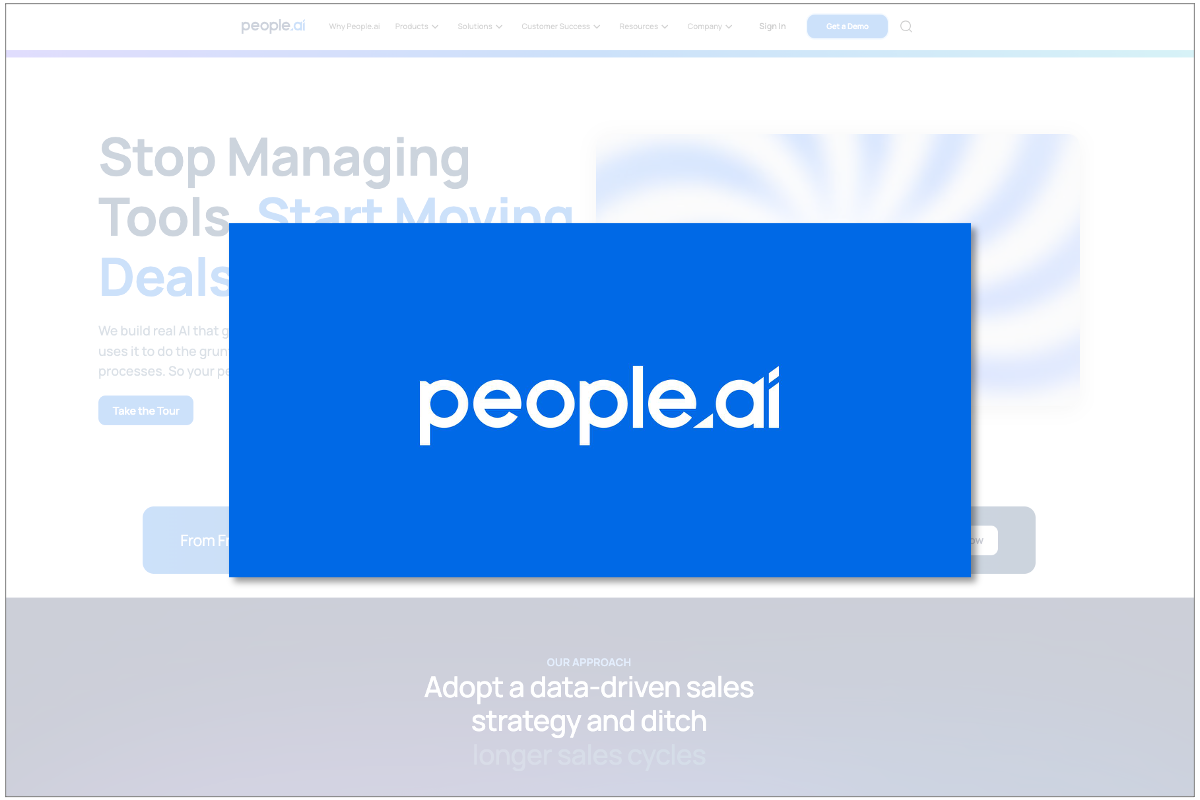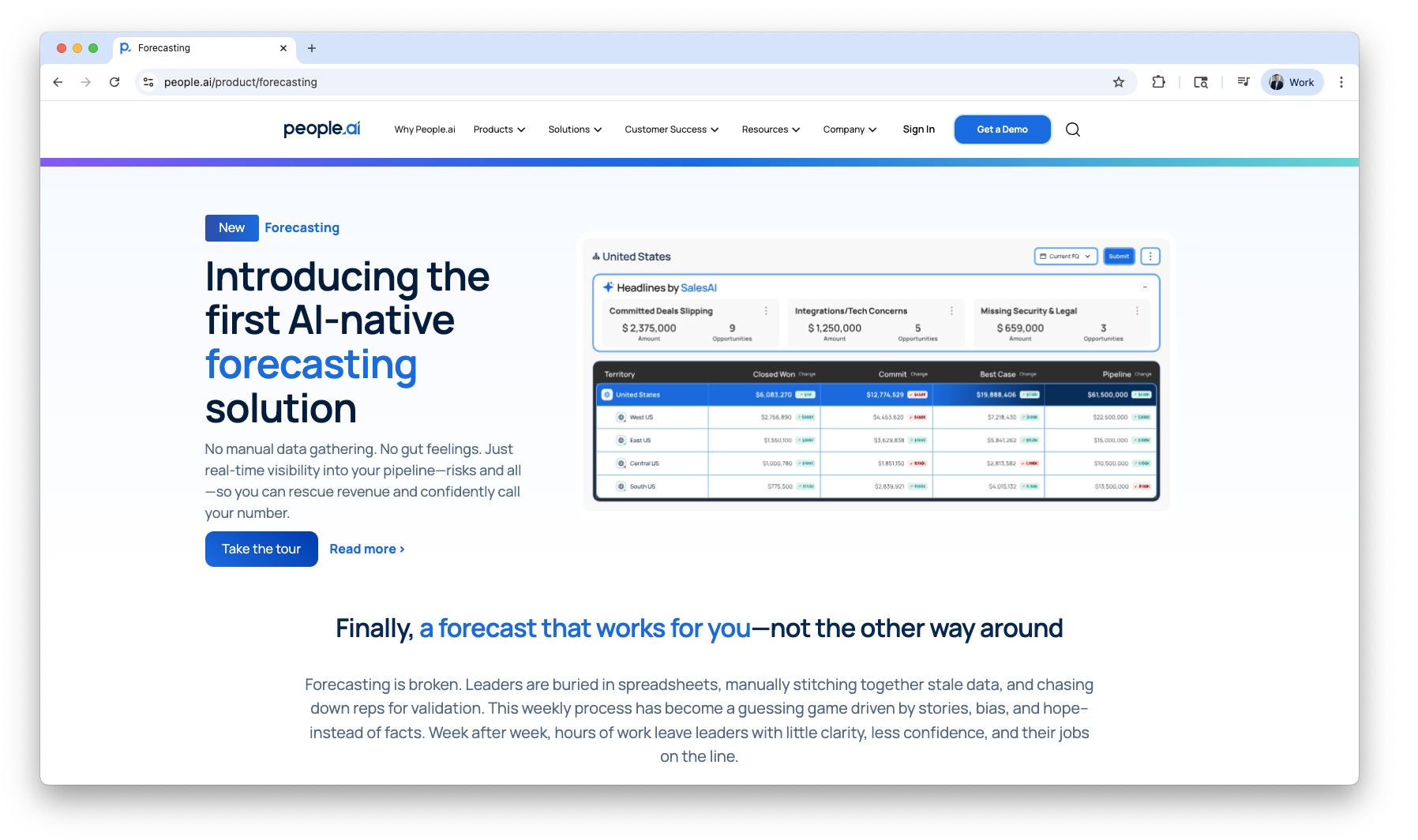


People.ai is an AI-powered revenue intelligence platform that automates the capture of sales activity from emails, calendars, and calls, eliminating manual CRM updates. It analyzes engagement patterns across accounts and stakeholders to deliver predictive insights that improve forecasting accuracy and deal execution. Designed for complex B2B sales environments, it turns raw activity data into a clear, actionable roadmap for driving revenue growth.
Subscribe now and get instant access to the best AI sales tools and walkthroughs.

People.ai is more than a revenue intelligence platform—it’s essentially a “sales brain” that ingests every interaction your team has with prospects and customers, then uses AI to make sense of it all. The platform sits quietly in the background, capturing data from email, calendars, calls, and CRMs, and then surfaces patterns and insights that humans either miss or don’t have time to compile. Unlike tools that slap “AI” on top of a manual process, People.ai’s core architecture is built around machine learning models trained specifically on sales activity and engagement data. This isn’t just about reporting on what happened; it’s about predicting what’s likely to happen and coaching reps on what to do next. In an era where sales cycles are longer and buyer committees are more complex, People.ai positions itself as the connective tissue between raw activity data and actionable revenue intelligence.
People.ai was clearly designed with enterprise B2B in mind. If your deal cycles span months, involve 8–10 decision-makers, and require constant stakeholder engagement, this platform fits like a glove. Revenue operations leaders will love it because it automates CRM hygiene and turns subjective pipeline reviews into objective, data-backed conversations. Sales managers benefit from the granular visibility into rep activity and deal health without micromanaging. For account executives, it eliminates the mind-numbing “log every email” grind while actually giving them better insights into their own deals. If you’re running a high-velocity SMB or transactional sales model, it might be overkill, but for any organization where relationships drive revenue and accuracy in forecasting is tied to the CFO’s blood pressure, People.ai is a serious contender.
Enterprise Account Management
Perfect for mapping complex buyer committees and ensuring multi-threaded engagement on high-value accounts.
Pipeline Forecasting
Transforms forecast calls from gut-driven debates to data-driven discussions with AI-powered accuracy.
Deal Coaching
Helps managers identify at-risk deals weeks earlier by analyzing relationship dynamics and engagement signals.
Revenue Operations
Automates CRM hygiene, reduces manual errors, and provides a single source of truth across the funnel.
Customer Success Handoffs
Gives post-sale teams a complete engagement history without relying on AE memory or scattered notes.
Strategic Planning
Uses historical activity patterns to identify where pipeline gaps form and how to fix them proactively.
The crown jewel is People.ai’s AI-powered engagement intelligence. It doesn’t just log activities; it interprets them. The platform scores relationship strength with each stakeholder and maps out influence dynamics in a deal. This is a lifesaver when deals stall because you’ve been over-relying on a single champion who doesn’t actually control the budget. The Account-Based Engagement Maps are visually compelling, giving sales leaders an at-a-glance view of whether a deal is structurally healthy or dangerously narrow. The Forecasting AI takes this engagement data and blends it with historical patterns to project pipeline outcomes with uncanny accuracy, allowing leaders to step into forecast calls armed with more than gut feel. Another quietly brilliant feature is automated opportunity matching, which ensures that every call, email, and meeting gets tied to the right deal automatically, eliminating data leakage and creating a single source of truth.
PROS
- Automation Nirvana: Eliminates the manual CRM update headache by capturing all relevant activities passively.
- AI That Feels Smart: Uses machine learning to flag at-risk deals and highlight growth opportunities based on engagement signals.
- Deep Multi-Threading Insights: Visualizes account maps and stakeholder relationships, making it obvious when you’re stuck talking to a single champion.
- Forecasting Confidence: Turns forecasting from “educated guess” to data-driven science.
- Ops-Friendly: Gives RevOps leaders a clear view into funnel health and activity patterns.
CONS
- Data Hungry: The AI only performs at its best when fed clean, high-volume data—garbage in still equals garbage out.
- Adoption Hurdles: Some reps see it as a surveillance tool rather than a productivity booster.
- Enterprise Bias: Pricing and feature depth are geared toward large organizations with complex sales motions.
- Learning Curve: The analytics depth is powerful but can overwhelm less mature teams without strong enablement.
The biggest win is the automation layer. Salespeople hate updating CRMs, and managers hate that salespeople hate it. People.ai solves that problem elegantly. The engagement scoring is another standout because it’s not just a vanity metric—it correlates activity to deal outcomes, which makes coaching conversations more productive. We also appreciated the platform’s ability to shine a light on organizational blind spots, like key stakeholders who haven’t been engaged in months. For revenue operations, the combination of clean data, predictive analytics, and historical benchmarking makes it a goldmine for strategic planning and forecasting accuracy.

The dependency on strong data pipelines can be a double-edged sword. For organizations still wrestling with CRM hygiene or lacking historical engagement data, People.ai’s AI can feel more like a “rough sketch” than a crystal ball. The user interface is functional but lacks the modern polish of some newer RevOps tools, which can affect user enthusiasm during rollout. Pricing transparency—or lack thereof—is another pain point. It’s very much in the “request a demo” category, and for mid-market teams or budget-conscious orgs, the enterprise pricing model can be a barrier. Lastly, while the AI is impressive, it occasionally serves up recommendations that feel like common sense dressed in an algorithmic suit—particularly in the early learning phase.
Expect enterprise-level pricing—no entry-level list prices sprinting from the site. Likely a per-seat subscription, with modular add-ons for advanced forecasting, analytics, and integration depth. You’ll need to negotiate—and justify—by tying platform benefits back to revenue impact: faster deals, cleaner forecasting, higher win rates. SMBs or those with lean deals may find the ROI harder to rationalize; big-ticket B2B operations will get the value pretty quickly.
%20(1)%20(2).png)